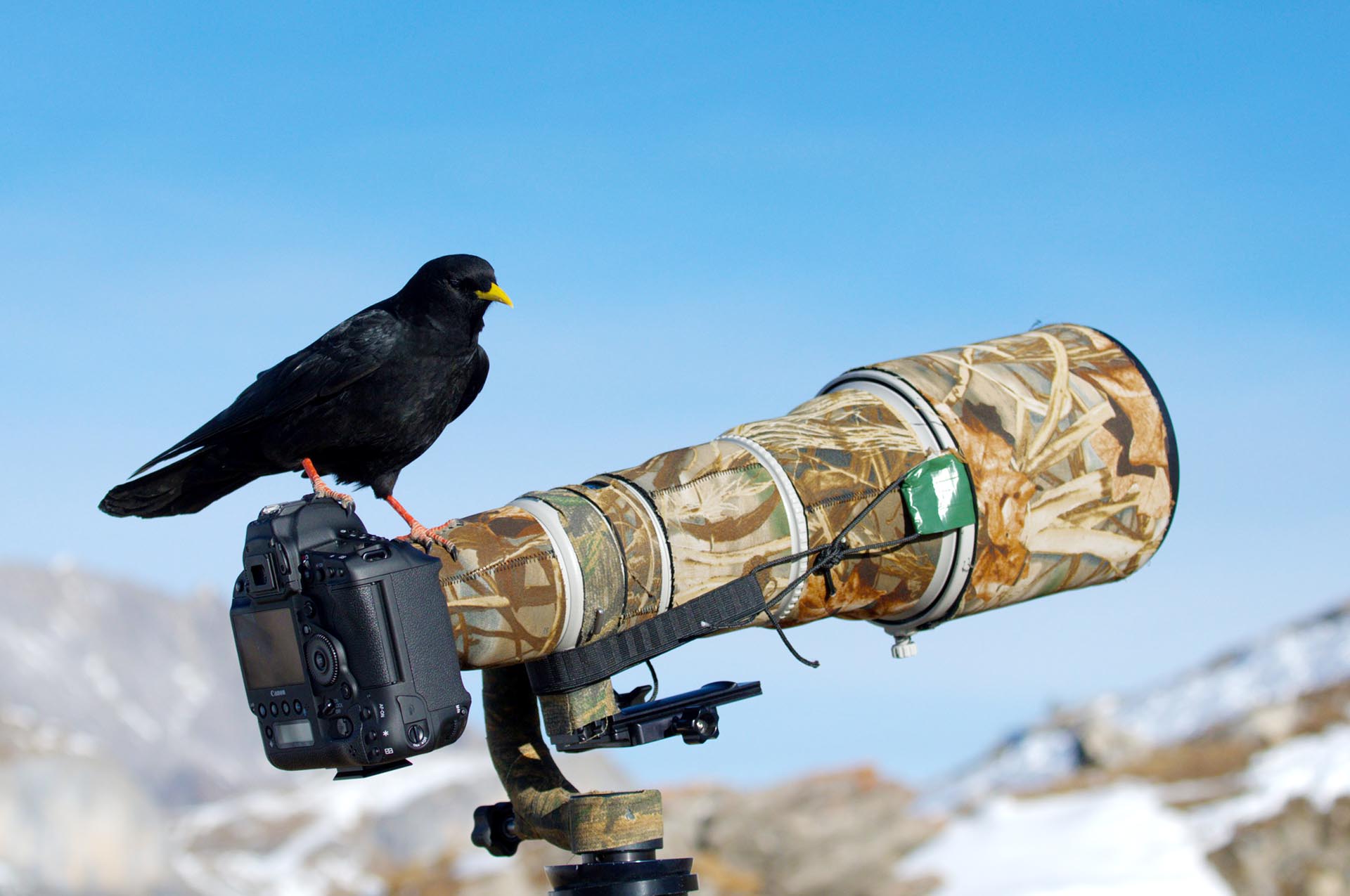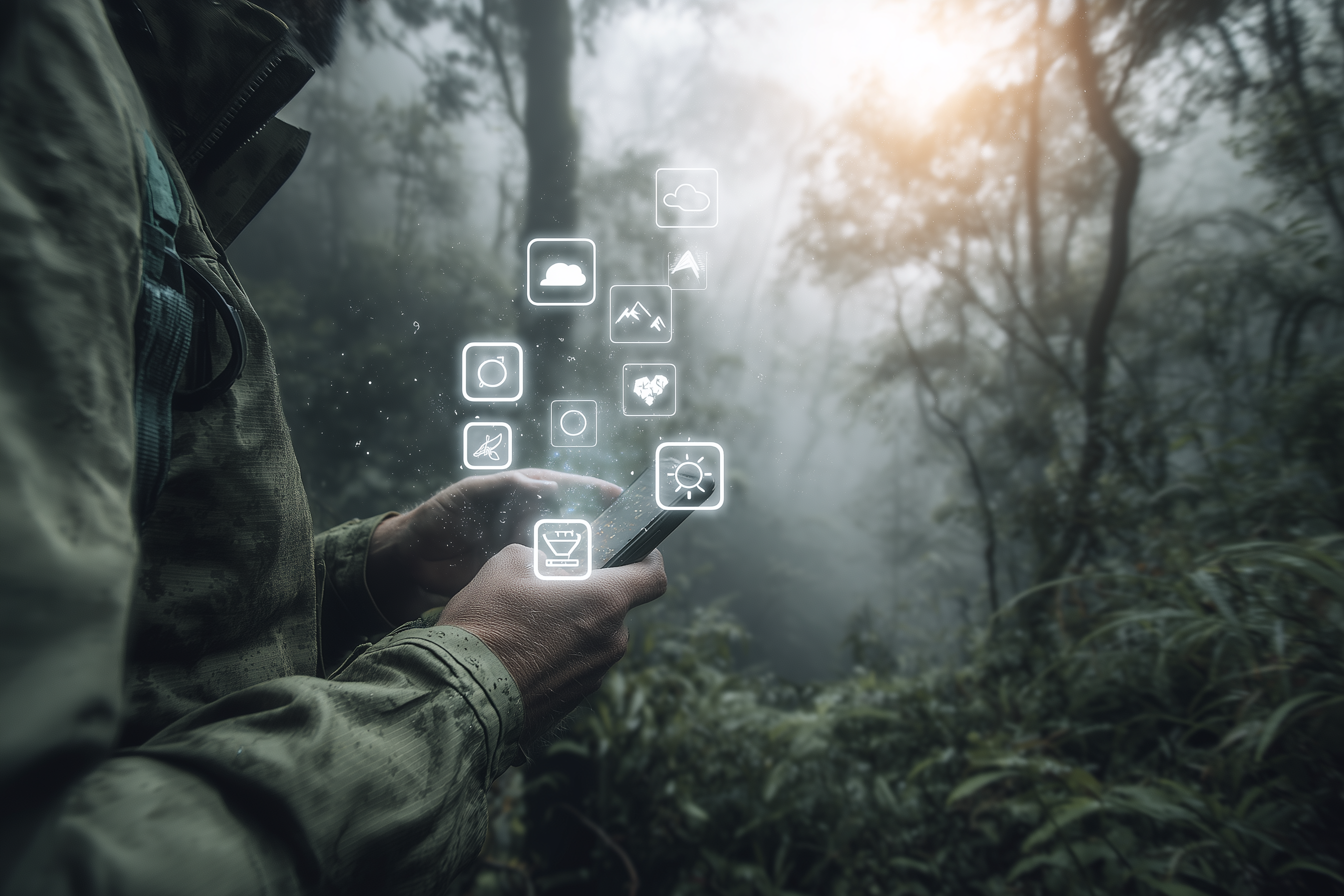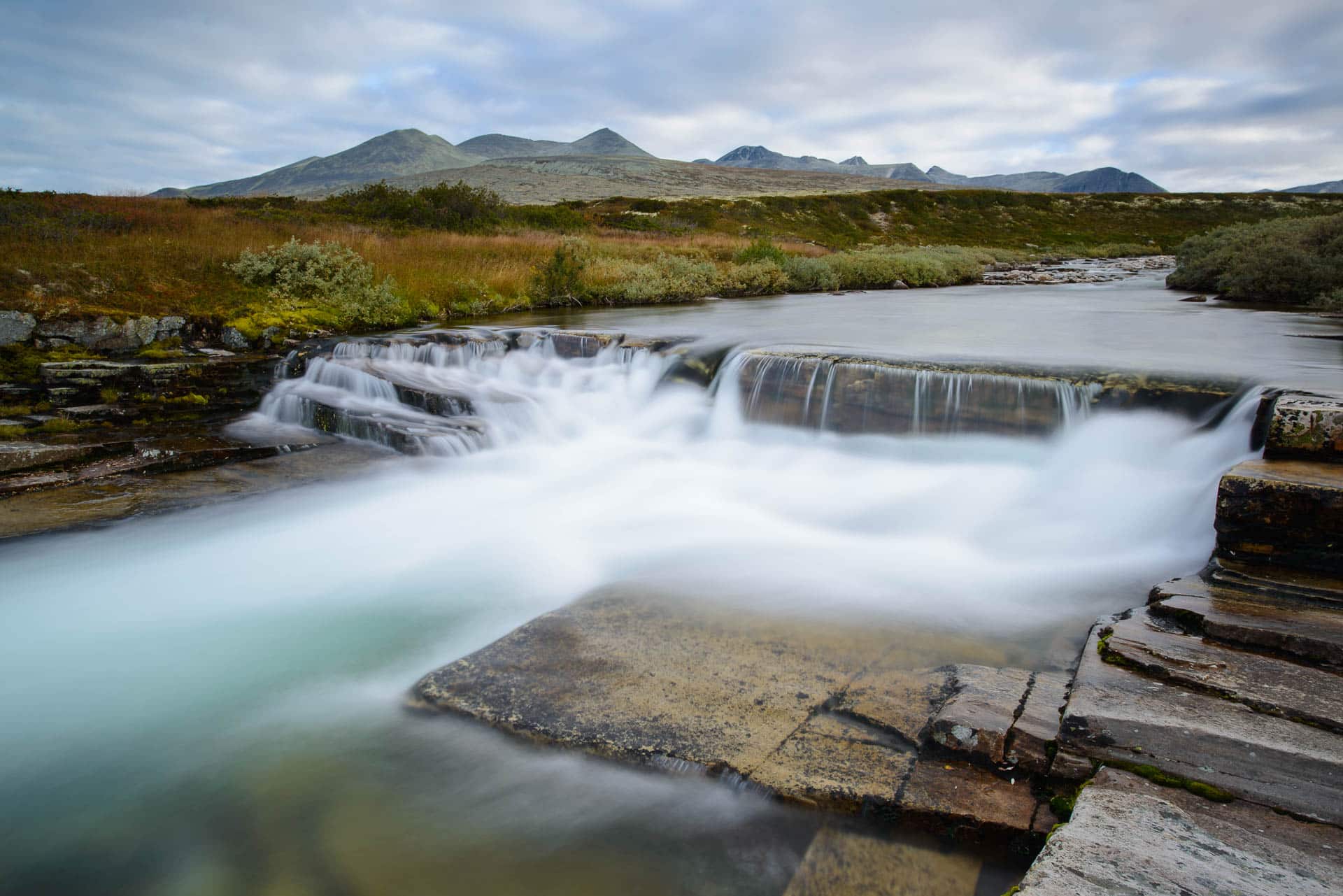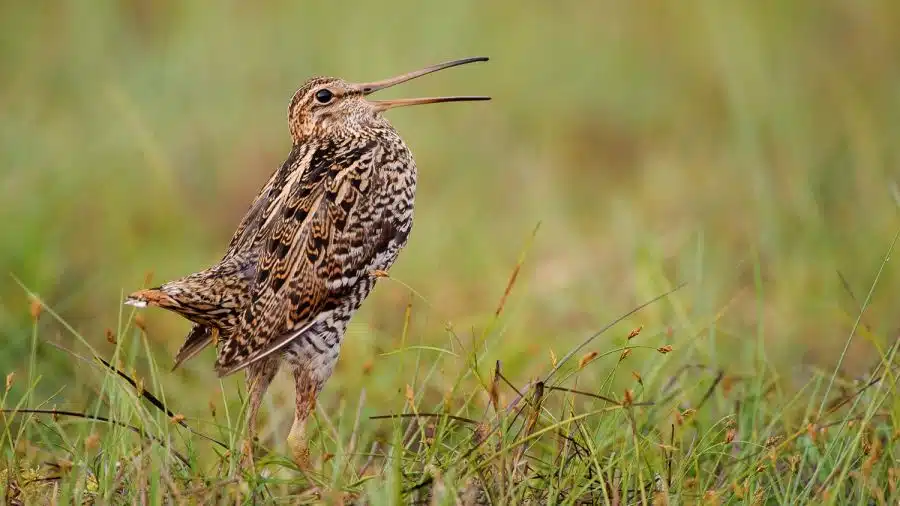At the beginning of the year, we decided to get out of Europe and head to South-East Asia. So my girlfriend and I planned our two-week trip to Thailand.
While researching on the internet, I noticed: Thailand does not necessarily seem to be the top destination for nature photographers. There are very few reports about worthwhile locations, interesting national parks and, surprisingly, very few really good photos. Why might that be, I thought to myself, and started planning on a whim.
Our flight was on Saturday, July 26 from Munich to Bangkok. Qatar Airways was the airline of choice and turned out to be a real stroke of luck. Cheap, but 30kg flight baggage + 7kg (unweighted 😉 ) hand luggage and very pleasant travel conditions. It was the rainy season – and that was true. We only saw blue skies on one day during the two weeks.
Bangkok – pure metropolis

We spent the first two days in Bangkok. We treated ourselves to a higher-priced hotel to acclimatize, but it wasn’t to be our loss. Jetlagged, we were glad to have a comfortable bed on the first evening. Day two then took us to the “Grand Palace”, the royal palace, which is a must-see. Incredibly magnificent, with an infinite number of detailed temples, figurines, everything in gold and, of course, full of tourists.
But it was actually just right for arriving. It also gave us a taste of the Thai lifestyle. I have to admit that I was amazed at how progressive the country is. Big highways, new cars, high-end shopping malls. Of course, there were also dirty backyards, small street kitchens and strange tuk-tuks that we preferred not to ride in.
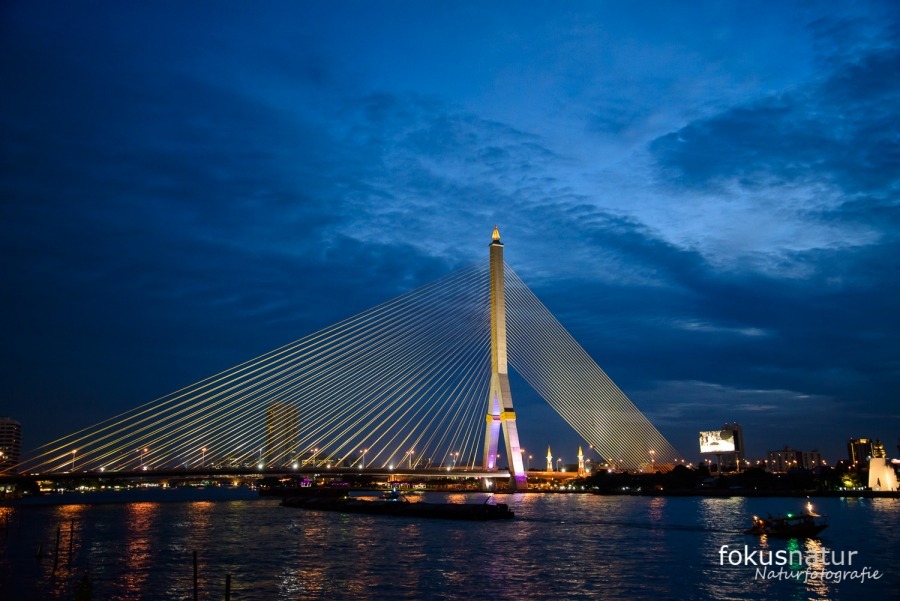
The local transportation system is excellent and you don’t have to worry about getting from A to B. We enjoyed some beautiful views of the Phra Rama 8 Bridge in the evening, with a delicious meal in the “Love Bar”, right on the river and also tried out the small street kitchens on the tourist mile, Khao San Road.
It was a great honor to meet Bruce Kekule. He, an American by birth, is a veteran of Thai nature photography, wrote a column for the Bangkok Post for many years, wrote several books about Thailand’s nature and is the government’s guilty conscience. He had a lot to say and I was particularly interested in his comments on camera traps in Thailand’s jungle. He is a true specialist in this area.
But then it went on!
Khao Yai – Thailand’s oldest national park
During our research, we decided not to waste too much time traveling and therefore looked for destinations close to Bangkok. Khao Yai National Park is located around three hours north of the capital and is a popular destination, especially for city dwellers. Every second Thai car commercial is filmed here, wedding couples come here for their photo shoots and of course there is a lot of nature to discover. We traveled from Bangkok by minibus for 300 baht/person, a comfortable method of travel, but one where a lot of luggage doesn’t really pay off. Because of two large suitcases, we had to buy a third seat, so we paid more for one person. This seems to be common in Thailand, as Thais only travel with lots of small plastic bags full of food.
So as not to be on our own in a country whose signs we can’t read and whose nature we don’t know at all, I looked for a tour operator and found what I was looking for at tontantravel. Ton, a Dutchman who emigrated to Thailand five years ago, and his wife Tan, a genuine Thai, offer wildlife tours in Khao Yai National Park for very little money (€300/person/week all inclusive). The two of them were highly committed, we stayed in simple accommodation right in the park, were looked after all day and drove through the park in their off-road vehicle to find animals.

These trips were interrupted by shorter trips directly into the jungle, where Ton was familiar with fruiting trees or had already had success on previous tours. Khao Yai is famous for its rather large population of Asian elephants. They like to use the roads as migration routes and regularly cause traffic jams. Nevertheless, they are not easy to spot and we were lucky enough to come across the pachyderms three times in total. In the dense forest, they can only be spotted with good ears; in the open areas, you have to look very closely to find the grey back at a great distance in the bushes, which are often almost two meters high.
At the roadside, near the parking bays and the visitor center, there are always hog monkeys, a type of macaque that expects only one thing from humans: Food. Unfortunately, they were not very photogenic because they preferred to use the tarred road rather than the vines to move around.
The main focus was on white-handed gibbons. This species is very common, but photographing them is the most difficult thing I have ever done. The monkeys are usually found in the highest treetops, where the wonderfully bright white sky makes the contrasts immeasurable. In addition, there is always a branch, leaf, twig or something else between the photographer and the monkey in the jungle. And then there are the lighting conditions. At ISO2000 and 1/125s, I thought I was already in Norway during the double snipe mating season. The yield was correspondingly poor, even though we had really looked for and found a family every day.

There were also all kinds of herpetological delicacies to see: Green whipsnake (Ahaetulla prasina), a fairly newly described species of necked spiny lizard (Acanthosaura cardamomensis), a lance adder, skinks, and a gecko (Cyrtodactylus intermedius) which, as expected, spent the day under dead wood. Butterfly agamas (Leiolepis belliana) were also easy to observe.
Indian muntjac and sambar deer graze in the open spaces, either individually or in pairs. Some are quite tame, others very shy. Depending on where you meet them. Nevertheless, I managed to get some nice photos of the two deer species.
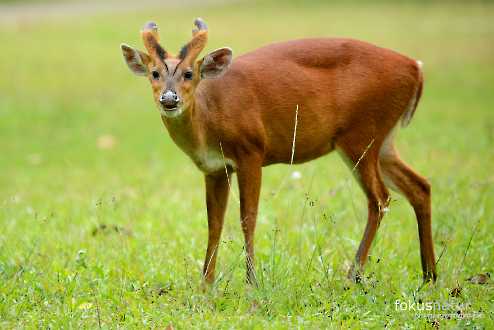
It was clear from the birds that the breeding season was already over but migration had not yet begun. The hornbills that had been announced could be seen, but they proved to be very erratic and here too the problem was: white sky, black bird, unfortunate photographer. However, there are some breeding caves that are easily visible from the road and it can certainly be fun to photograph the male approaching to feed the female walled up in the cave.
The six days flew by and we had already become accustomed to being woken up by calling gibbons.
Khao Sam Roi Yot – beach, mangroves, monkeys
The second week was planned as a classic relaxed beach vacation with the option of a little photography. Sam Roi Yot is a small national park on the Gulf coast of Thailand, around four hours south of Bangkok. The name means a thousand peaks and comes from the bizarre rock formations.
We opted for a resort at Dolphin Bay. Only 100m to the beach, which was completely deserted at the beginning of August. We were sometimes the only guests at the resort and had the full attention of the extremely friendly staff. Due to the lack of sunshine, we spent less time on the beach – at least I did – and spent the time looking at the beautiful plumage of the emerald spints, which are very common there. Hindu Roller, Hoopoe and Shepherd’s Maina were also omnipresent, although the Hoopoe simply refused to move in front of the lens.
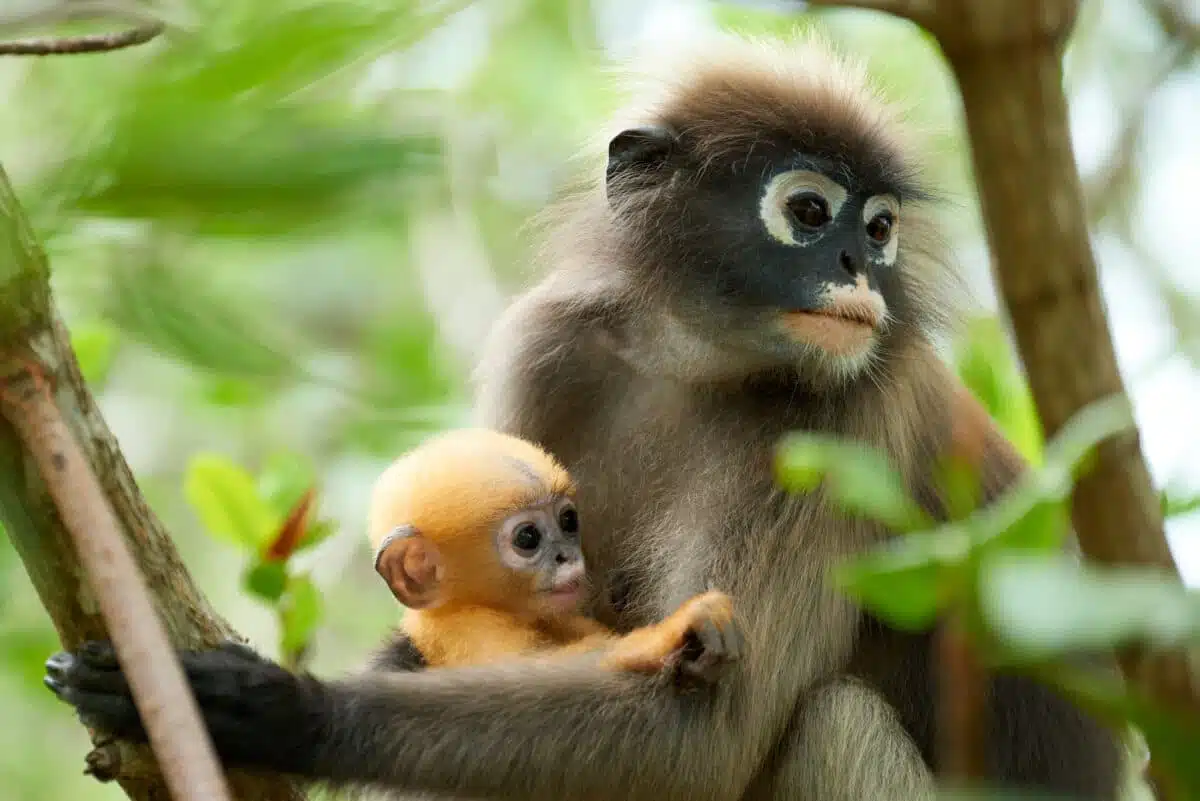
2km off the coast lies “Monkey Island”. It is inhabited by a horde of Javanese monkeys who spend the day waiting for tourists. A good opportunity to photograph these macaques, which specialize in seafood. However, we didn’t realize that the clever animals knew exactly how to open rucksacks and then easily chase away threatening humans with a little screeching and snarling. Unfortunately, we didn’t have any monkey food to distract us and had to wait patiently until the pubescent males had had enough of the bags and left. I was particularly impressed by how well the monkeys swam and even dived to find food.
From Dolphin Bay (also known as Phu Noi Beach), it is around 20 km to the national park headquarters. Our first visit was to see the southern spectacled langurs that live there. They should often be around the headquarters – and we were lucky. At the same time as us, a group of langurs came directly to the balcony of the small restaurant to drink fresh water and stayed there for several hours. We had plenty of time to observe and photograph the calm animals with two orange-colored young. Not much action is to be expected from animals that feed exclusively on mangrove leaves anyway. The group slept most of the time and then leisurely made their way through the mangrove forest.
Butterfly dragons cavort between the bungalows at the headquarters and at lunchtime it is almost impossible to get to the toilet without chasing them off the path. But as quickly as they are gone, they come out again.
A second tour took us to Phraya Nakon Cave. It was the aforementioned only day with blue skies and perfect for photographing the cave with its collapsed ceiling and the temple inside. However, the ascent proved to be more strenuous than expected. According to the guidebooks and maps, it was 430m. That may be true, but it doesn’t take into account the meters in altitude that you cover on the way. The path leads over countless limestone steps through the forest into the cave, where you are greeted by a cool breeze. If you visit in the morning, you will also experience the sun shining through the opening into the cave and creating a unique atmosphere.
Conclusion
Thailand is by no means a country where nature photographers have no chance. Sure, you won’t see tigers in the wild (99% of the time), but you will see all kinds of other large mammals. However, you have to be prepared for the most difficult lighting conditions in the forest and think carefully about taking a long telephoto lens with you. It makes you terribly inflexible, with a large tripod, weight and at over 30°C. Perhaps a decent zoom on a monopod is far better suited to this and it’s better to leave the long lens in the car. This is how I achieved the best results. In the forest: 80-400, in the car: 500(x1.4).


